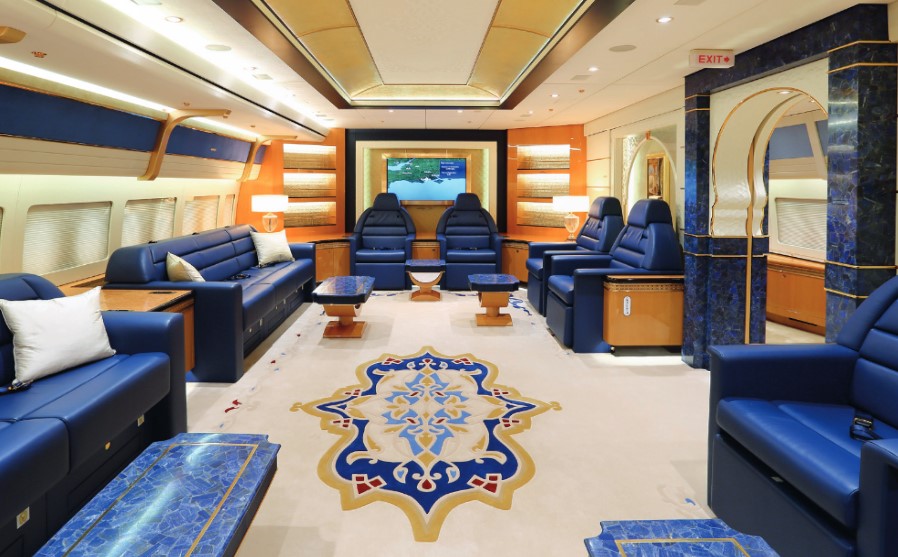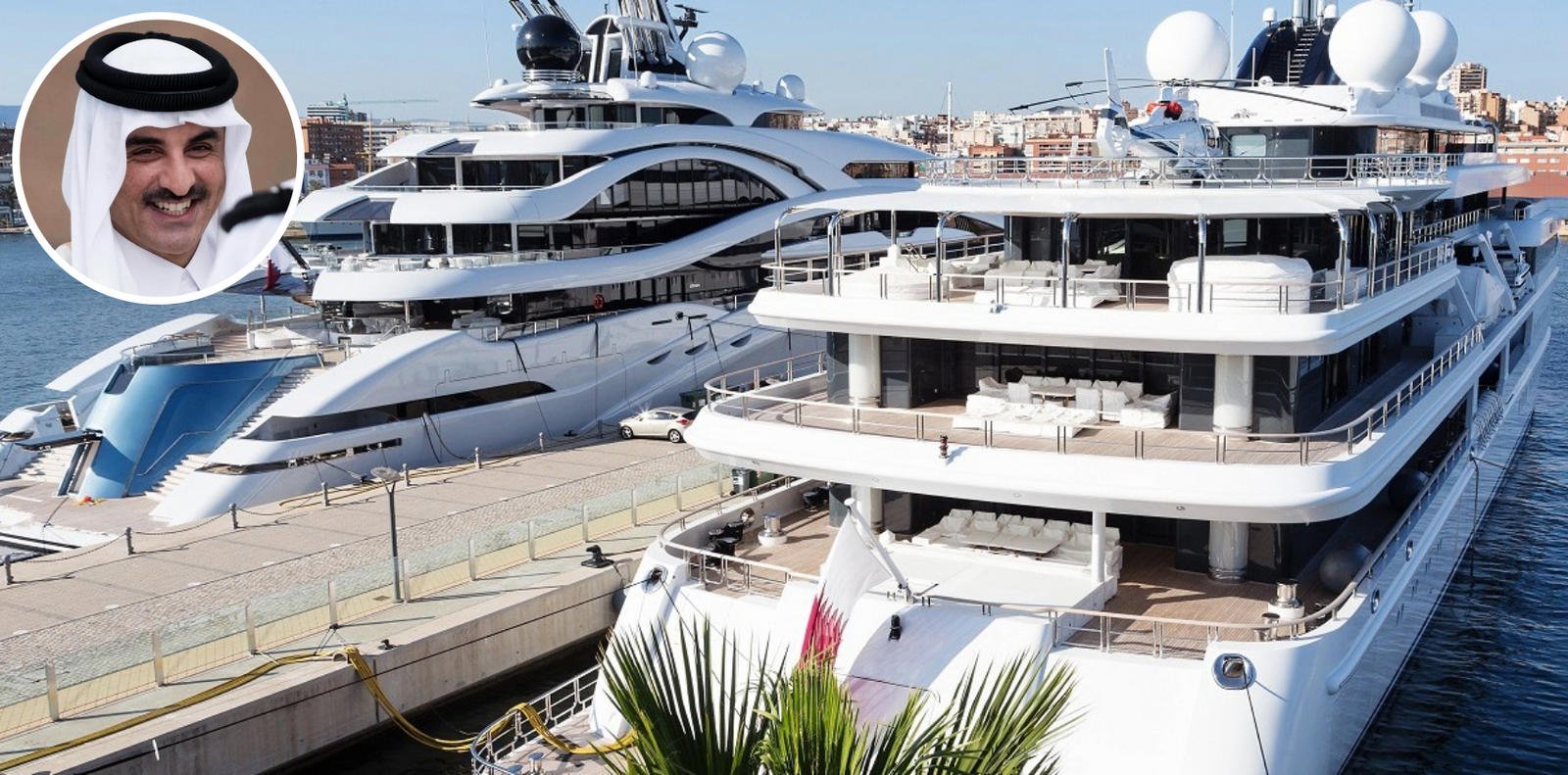Skip to content
The Monarch, the Mega-Jet and a Major Airport Logistics Puzzle
Meet the Plane



The airplane in question is the VIP-configured Boeing 747‑8 BBJ operated by Qatar Amiri Flight on behalf of Tamim bin Hamad Al Thani, Emir of Qatar.
This is one of the largest private jets in the world, valued at approximately €360 million (roughly $360 million) according to multiple reports. (Aviation.Direct)
Despite its grandeur, it carries fewer than a typical commercial aircraft—about 89 passengers and 14 crew in the configuration cited. (Luxurylaunches)
What makes it extraordinary is not merely its luxury but its sheer size and the operational impact that size has when it lands at airports not fully designed for such a beast.
The Mallorca Episode



At the end of June 2025, the Emir’s 747 landed at Palma de Mallorca Airport (PMI) on Spain’s island of Mallorca. (Aviation.Direct)
According to local air-traffic controllers, the landing generated special handling demands:
-
Because of the aircraft’s size (wingspan over 65 m, length over 76 m) it falls into the aviation category known as “Code F”. (aeroTELEGRAPH)
-
The airport has two parallel runways, but only one runway (06L/24R) was authorised for this jet, as it is the longest and widest at PMI (3,270 m long × 45 m wide) and could just meet the safety margins for such a large aircraft. (Luxurious)
-
After the 747-8 landed, the runway had to undergo an inspection to check for damage or debris before other aircraft could resume normal movements. (Majorca Daily Bulletin)
-
Taxiing restrictions for other aircraft were increased; the large jet required clearance and spacing that slowed surface movement operations. (Gulf Insider)
In summary: the arrival of the jet forced controllers to slow, inspect, isolate, and temporarily reduce overall airport capacity—something that commercial airports do not usually plan for on this scale.
Why It’s Newsworthy & What It Tells Us
The episode encapsulates several intersecting trends and implications:
-
Luxury & Scale
The Emir’s 747-8 BBJ is more palace than plane. Its interior reportedly features gold-plated touches, lounges, bedrooms, and possibly an operating room. (Aviation.Direct)
-
It is a symbol of extraordinary wealth and status—but also raises logistical and operational demands wherever it lands.
-
Airport Infrastructure & Limitations
Commercial airports are engineered for a typical mix of aircraft—narrow bodies, wide-bodies (A320, A330, B777 etc).
-
A super-large VIP 747-8 imposes special constraints: runway length & width, pavement strength (gross weight), taxiway clearance (wingspan), stand (parking) size, wake turbulence spacing etc.
-
At PMI, only one runway qualified and required post-landing inspection. (Aviation.Direct)
-
This highlights how an airport that accommodates regular commercial traffic can still be challenged by a “special aircraft”.
-
Operational Impact & Efficiency
While the delays and constraints were handled safely and without major incident, they did reduce the airport’s throughput. For other incoming/outgoing flights, spacing had to increase; certain taxiways were cleared; ground service stood by.
-
Such “one off” large-jet movements can ripple through airport schedules.
-
Media & Public Perception
The story resonates beyond aviation circles because it combines fascination (what a massive private jet!) with a slight “oddity” or “exception to the norm” (airport operations temporarily disrupted for a rich VIP).
-
It also touches on themes of inequality, extravagance, island luxury holidays—since the Emir and family reportedly fly to Mallorca to escape summer heat in Doha. (Luxurylaunches)
For local observers at Palma, the arrival of this jet may be an annual spectacle—albeit one that entangles airport logistics.
A Little More Context
-
The classification “Code F” refers to aircraft with wingspans more than 65 m. The 747-8 BBJ used by Qatar falls into that.
-
At PMI, the jet’s wingspan (~68.5 m) meant special clearance. (Luxurylaunches)
-
The designation “Heavy” (which controllers use) means that aircraft following it must maintain extra spacing because of its wake turbulence.
-
The 747-8 qualifies, so following aircraft must keep safe distance. (Gulf Insider)
-
The jet’s stationing at Mallorca reportedly aligns with the royal family’s annual summer stay in the Mediterranean, escaping Doha’s intense heat (sometimes described as “120 °F” / ~49 °C). (Luxurylaunches)
-
While very large and luxurious, the 747-8 BBJ’s passenger count is modest compared with commercial 747’s—again highlighting that this is an elite VIP configuration, not maximising seats. (Aviation.Direct)
So What Does This Mean for the Broader Reader?
If you fly into, or observe operations at, a midsize holiday airport like Palma de Mallorca, this story serves as a reminder that:
-
Airport capacity is not just about terminal size or runway length—it’s about the mix of aircraft types and how one unusual arrival can temporarily change the equations.
-
VIP movements—especially large ones—require extra coordination, which may impact other flights (though airport authorities indicate it was handled safely).
-
When you see a massive private jet on the ramp, you’re seeing the intersection of luxury, aviation engineering and infrastructure constraints—each playing a role.
-
For airports, it might be an operational curiosity; for the public, it’s a spectacle—and one that raises questions (air travel impact, runway wear, noise, scheduling).
The landing of the Emir of Qatar’s 747-8 BBJ at Palma de Mallorca is more than just a flashy arrival.
It spotlights how even world-class airports can experience operational ripple effects when accommodating an aircraft of this scale.
From restricted runway use and mandatory inspections to adjusted taxiway and spacing protocols, the presence of this “flying palace” turned a routine landing into a mini logistical event.
It also reflects the broader narrative of how private luxury and public infrastructure intersect in the world of high-end aviation.







